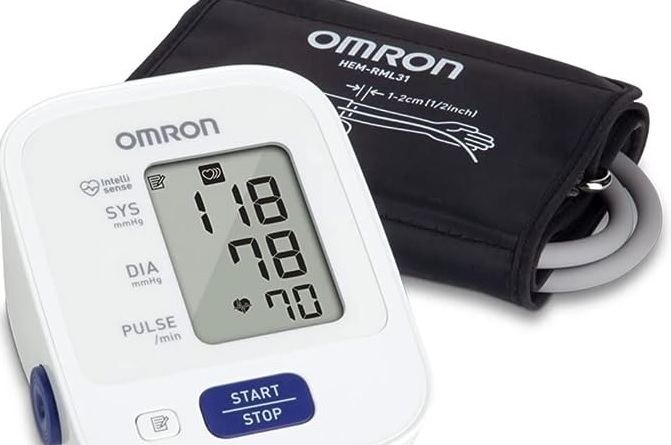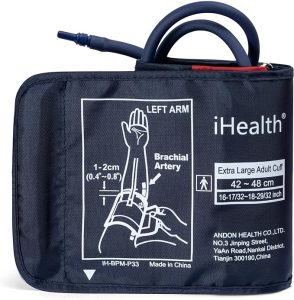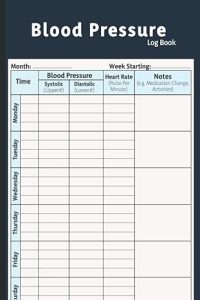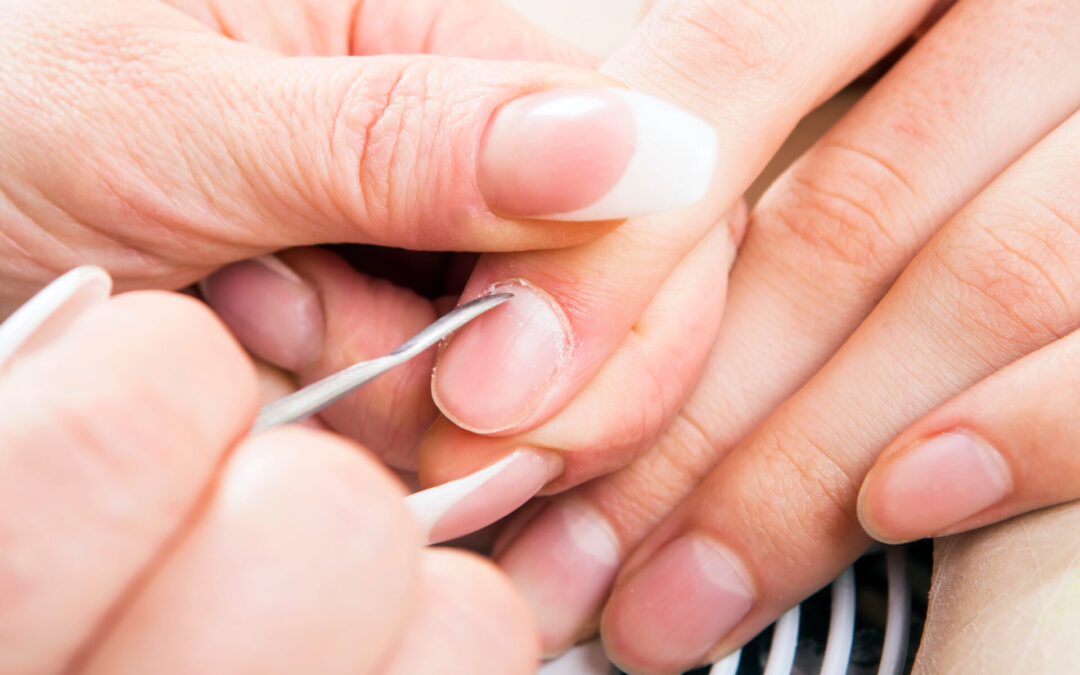This article will clearly explain how to read and navigate the Omron BP monitor symbols. But first, a little background about the issue all together.
According to the World Health Organization, an estimated 1.28 billion people worldwide have high blood pressure, also called hypertension. It’s a staggering figure, but the most alarming part is that the WHO also estimates that 46% of affected adults are unaware that they have hypertension.
That’s why the Centers for Disease Control and Prevention recommends measuring your blood pressure at home to assist your medical care team in properly diagnosing and addressing related medical conditions before they increase in severity.
You’ll need a high-quality blood pressure monitor to use at home if you want reliable readings. Thankfully, Omron makes one of the best blood pressure monitors on the market today. We’ve put together a guide to help you purchase, use, and read your Omron blood pressure monitor, so you can get the peace of mind you deserve.
Overview of the Omron Blood Pressure Monitor
The Omron blood pressure monitor, like all blood pressure monitors designed for home use, provides a quick and accurate way for people to check their blood pressure from the comfort of their own homes.
This helps them keep a close eye on their blood pressure and spot small problems before they snowball into bigger, more uncontrollable issues. They give a person peace of mind by letting them know if or when their blood pressure falls outside the normal threshold.
Omron blood pressure monitors also provide data that may greatly assist a medical care team in the diagnosis or treatment of various conditions or illnesses, making them an invaluable investment for at-risk populations or, well, everyone.
Omron BP Monitor Symbols – Under each section is the explanation of what the symbols mean
If you’re going to get the most from your Omron blood pressure monitor, you’ll need to get acquainted with the Intellisense Omron symbols and what each means.
Numerical Results
Omron blood pressure monitors feature a highly visible display that lets a user know their systolic blood pressure, diastolic blood pressure, and pulse.
Systolic and diastolic blood pressure is measured in millimeters of mercury (mmHg), whereas your pulse, or heartbeat, is recorded in beats per minute (bpm).
Cuff Wrapping Guide
One of the first things you’re going to do when you take a reading is secure the cuff around your upper arm. You want a snug fit so the cuff doesn’t slide around, but you also don’t want to totally choke the life out of your poor limb.
The Omron blood pressure cuff symbols are among the most straightforward of the Omron BP monitor symbols. When the cuff is secure, there will be a symbol that resembles an open circle with the letters “OK” inside. As you might imagine, that means you’re okay to proceed.
If, instead, you see that swoopy open circle and an arrow to its left pointing down, then the monitor is notifying you that the cuff is wrapped too loosely and you will not get an accurate reading.
Body Movement Detection
You gotta love how intuitive the Intellisense Omron symbols are in most cases.
The Body Movement Detection symbol is no exception here, as the icon will display the head and torso of a person with lines above their shoulders. Those lines symbolize shakes, notifying the user that they must hold still while the reading is recorded.
Hypertension Indicator
Perhaps the most medically significant symbol thus far is the Hypertension Indicator, which lets a user know that their reading falls within the range that may warrant getting checked by a medical professional.
Potential hypertension is indicated with an Omron blood pressure monitor heart symbol. The heart symbol also features a line with spikes and dips, just like the one you’d find on an electrocardiogram machine.
If you get this symbol, Omron recommends repeating the test after 2 to 3 minutes. After a few consistent readings indicating hypertension, it’s time to consult your doctor and get medical advice that’s personal to you.
Irregular Heartbeat Detection
You can also use the Omron blood pressure machine symbols to see if you have an irregular heartbeat, also known as arrhythmia, as this is a condition that may warrant a doctor’s visit.
The Omron irregular heartbeat icon looks like a heart with a single line or multiple lines to the heart’s direct right. If you see this icon appear, retest to check for consistency and, if you keep getting it, reach out to your doctor or other healthcare professional for further insight.
How to Buy the Omron BP Monitor
Buying the Omron BP Monitor on Amazon offers numerous advantages. Firstly, Omron is renowned for its accuracy and reliability in blood pressure monitoring, ensuring you get precise readings for better health management. Secondly, purchasing through Amazon provides convenience and accessibility, with quick delivery to your doorstep. Additionally, Amazon often offers competitive pricing and deals, allowing you to save money while investing in your health. Moreover, by buying from a trusted online platform like Amazon, you can access a wide range of customer reviews, enabling you to make an informed decision about your purchase. Overall, opting for the Omron BP Monitor on Amazon ensures you receive a quality product efficiently and conveniently.
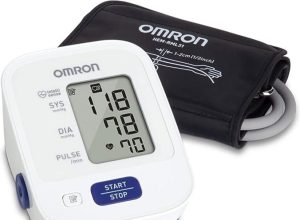
Omron products may also be purchased over the phone by calling (866) 216-1333 or at a number of authorized retailers, including major chains like:
- Amazon
- CVS
- Best Buy
- Target
- Sam’s Club
- Walmart
- Rite Aid
- FSA Store
- Walgreens
Other Ways to Track Your Blood Pressure
The Omron blood pressure monitor icons make taking readings super easy, but, back in the day, medical staff had to do things the old-fashioned way with a blood pressure cuff and stethoscope.
You can still record your blood pressure this way, but the readings will be less accurate unless you have specific training on the technique. Here’s how to do it:
- Secure the cuff around your upper arm.
- Place your stethoscope over the brachial artery found in the crook of the elbow.
- Pump the cuff to tighten, listening for when the pulse in the brachial artery stops.
- Once you hear it stop, stop inflating the cuff.
- Slowly deflate the cuff, keeping an eye on the sphygmomanometer (blood pressure gauge). Once you hear the pulse again, record the number. This is the systolic blood pressure reading.
- Continue deflating until the pulse disappears again. Once it does, note and record the sphygmomanometer reading as the diastolic pressure.
With practice and professional training, you can learn this technique. Purchasing a high-quality home blood pressure monitor from Omron, on the other hand, is way easier and much more accurate, so that’s what we’d recommend.
Keeping a Blood Pressure Log
The American Heart Association recommends monitoring your heart rate regularly and writing it in a log or journal. After all, one reading is not enough to establish a trend; it’s only a snapshot of your blood pressure in one very specific moment, which makes it difficult for healthcare professionals to extrapolate meaningful medical data.
For the most accurate data, take 2 or 3 readings each day approximately a minute apart from one another. Measuring at the same time every day is helpful too.
Other Types of BP Monitors to Consider
Aneroid and digital monitors both involve a cuff that fits around your upper arm, but some people may find these off putting, uncomfortable, or otherwise be opposed to this method of measuring their blood pressure.
For individuals such as these, they make wrist monitors that, as the name suggests, go right around the wrist instead of the upper arm. Thankfully, the Omron wrist blood pressure monitor symbols are the same as the standard ones, so you won’t need to learn a new lingo.
Reasons to Track Your Blood Pressure
According to Columbia University Irving Medical Center, hypertension is commonly called “the silent killer” in the medical community because of its prevalence, the types of dire complications that could arise from it, and, most alarmingly, the fact that most people with high blood pressure do not have any symptoms to indicate that there’s anything wrong.
A hypertension patient who does not receive proper treatment is at a greater risk for the following diseases and conditions:
- Heart attack
- Stroke
- Brain aneurysm
- Heart failure
- Kidney failure
- Clogged arteries
- Dementia
- Sexual dysfunction
- Vision problems
- Blindness
Considering that most of these conditions severely impact a person’s quality of life or result in death, it’s very much worth it to keep an eye on your blood pressure, as early intervention is key.
When to See a Doctor
If you’re consistently getting elevated or high blood pressure readings, you should consult your doctor for their medical advice, further testing, and treatment.
There’s no cause for alarm if you’re often in the normal range but occasionally record elevated results, but seeing a few days in a row of elevated or significantly elevated readings should be the impetus to call your doctor, discuss, and make an appointment.
As they say, “better safe than sorry.”
What are Normal Blood Pressure Levels by Age and Gender?
Here’s a quick breakdown of what’s a good range based on your age range and gender:
- Men 18-39: 119/70 mmHg
- Women 18-39: 110/68 mmHg
- Men 40-59: 124/77 mmHg
- Women 40-59: 122/74 mmHg
- Men 60+: 133/69 mm Hg
- Women 60+: 139/68 mmHg
Numbers in proximity to these likely indicate that all is well. A systolic reading between 130 and 139 combined with a diastolic reading of 80 to 89 may indicate hypertension is present.
However, a reading of 140/90 or higher could be considered dangerous, whereas a reading above 180/120 indicates a hypertensive crisis that requires immediate medical intervention.
When in doubt, consult your doctor or other qualified healthcare professional.
Zoppler is reader supported and may earn affiliate commissions from links on this page. We support and believe in all the products and services we promote and are affiliated with.

